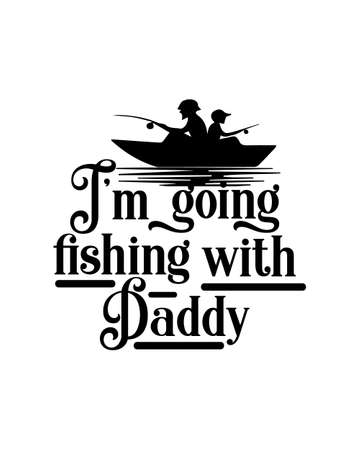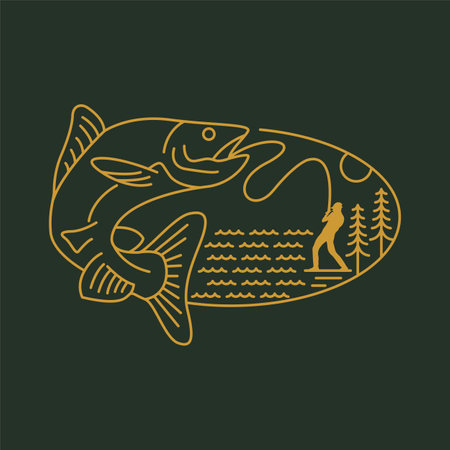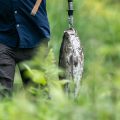Introduction: The Hunt for Hidden Gems
There’s something undeniably captivating about slipping away from the crowds and casting your line in a place where only a handful of anglers have ever stood. For fly fishing enthusiasts, the United States is brimming with secluded lakes and streams that promise more than just a good catch—they offer a true sense of adventure. As you venture off the beaten path, each hidden spot becomes a story waiting to unfold, filled with untouched beauty, serene landscapes, and the thrill of discovery. Remote fly fishing isn’t just about landing trophy trout or wild bass; it’s about embracing the spirit of exploration, connecting with nature on its own terms, and making memories in places few have experienced. Whether you’re trekking deep into the Rockies or navigating backroads in New England, these out-of-the-way waters are where legends—and lifelong passions—are born.
Northwest Mystique: Untouched Waters of the Pacific
When it comes to fly fishing’s best-kept secrets, the Pacific Northwest stands out with its pristine, lesser-known lakes and streams. While many anglers head straight for famous rivers like the Columbia or Snake, seasoned locals know that some of the most rewarding fly fishing awaits in the remote waters tucked away in Washington, Oregon, and Idaho. Here’s a closer look at these hidden gems—where solitude meets spectacular fishing opportunities.
Secret Spots Worth Discovering
The rugged landscapes of the Northwest are dotted with crystal-clear alpine lakes and meandering streams that rarely make it into national travel guides. Some are only accessible by hiking or forest roads, preserving their untouched charm and healthy fish populations. The table below highlights a few top picks among locals:
| State | Hidden Gem | Type | What Makes It Unique? |
|---|---|---|---|
| Washington | Lake Lenore | Alkali Lake | Big Lahontan cutthroat trout; surreal basalt cliffs backdrop |
| Oregon | Metolius River (Upper stretches) | Spring-fed Stream | Crystal-clear water; wild rainbow and bull trout; challenging dry fly action |
| Idaho | Kelly Creek | Mountain Stream | Remote wilderness experience; abundant native Westslope cutthroat trout |
Local Tips and Etiquette
If you want to blend in with local anglers—and keep these spots special—remember to practice catch-and-release where required and respect trail access rules. Many of these waters are managed with conservation in mind, so barbless hooks and single-fly restrictions are common. Always check state regulations before you go.
Planning Your Adventure
The best seasons for these secretive fisheries often stretch from late spring through early fall, but each location has its own sweet spot. Be prepared for changing weather, limited cell service, and sometimes primitive facilities. Pack accordingly: waders, layered clothing, bear spray in Idaho’s backcountry, and a sense of adventure are all must-haves.

3. Mountain Majesty: Remote Hotspots in the Rockies
If you’re searching for fly fishing adventures far from the crowds, look no further than the Rocky Mountains. Tucked away in the wild heart of Montana, Wyoming, and Colorado, these rugged peaks hide some of the nation’s most pristine streams and alpine lakes—perfect for anglers who crave solitude and raw beauty. Imagine casting your line into a crystal-clear creek with nothing but snow-capped mountains and pine forests as your backdrop. It’s here that you’ll find native cutthroat and rainbow trout, feisty and untouched, ready to rise for a perfectly presented dry fly.
Montana: Big Sky Country’s Hidden Gems
Montana is legendary among fly fishers, but beyond the famous Madison and Yellowstone Rivers, there are secret stretches like Rock Creek or the alpine tarns near Glacier National Park. These spots demand a little extra effort to reach, but reward you with trophy-sized trout and breathtaking vistas that make every cast feel epic.
Wyoming: High Country Streams Off the Beaten Path
In Wyoming, head deep into the Wind River Range or explore lesser-known tributaries of the Snake River. Many of these streams require a bit of hiking—or even horseback riding—to access, but the payoff is wild trout that rarely see an artificial fly and waters so clear you can spot your quarry before you cast.
Colorado: Elevation Equals Isolation
Colorado’s backcountry lakes and streams are a fly fisher’s dream come true. Think beyond the well-trodden South Platte or Fryingpan; instead, trek into the Flat Tops Wilderness or up to high-altitude lakes above treeline. Here, you’ll find native greenback cutthroat trout—a rare catch—and quiet shores where it feels like you have all of Colorado to yourself.
Pro Tips for Fishing Remote Rockies Waters
Before heading out, be sure to check local regulations—many of these remote areas are protected habitats. Pack light but smart: bring bear spray, extra layers for unpredictable mountain weather, and barbless hooks to help conserve these delicate fisheries. And don’t forget your camera—the scenery is just as unforgettable as the fish.
4. Southern Surprises: Unexpected Fly Fishing in the South
When most anglers think of the best fly fishing in the U.S., their minds often wander to Montana’s wild rivers or the Pacific Northwest’s legendary streams. But tucked away in the American South are hidden gems that challenge every stereotype. The Carolinas, Tennessee, and Georgia may be famous for their barbecue and southern hospitality, but they also boast some truly remarkable—and often overlooked—fly fishing destinations. These out-of-the-way spots offer crystal-clear waters teeming with trout and bass, all surrounded by lush forests and rolling Appalachian hills.
Unexpected Hotspots in the Heart of Dixie
While many assume the South is too warm for cold-water fisheries, certain mountain streams and highland lakes defy expectations. North Carolina’s Davidson River, for example, weaves through Pisgah National Forest, offering miles of pristine water perfect for casting a dry fly. Over in Tennessee, the Tellico River surprises with its wild rainbow and brown trout populations nestled beneath a canopy of hardwoods. Meanwhile, Georgia’s Tallulah River runs cold and clear through secluded valleys, providing a tranquil experience for those willing to venture off the beaten path.
Must-Visit Remote Destinations
| State | Location | Main Species | Why It’s Special |
|---|---|---|---|
| North Carolina | Davidson River (Pisgah National Forest) | Rainbow & Brown Trout | Year-round access; beautiful forest setting; technical but rewarding water |
| Tennessee | Tellico River (Cherokee National Forest) | Wild Rainbow & Brown Trout | Remote stretches; scenic mountain backdrop; excellent hatches in spring and fall |
| Georgia | Tallulah River (Chattahoochee-Oconee National Forest) | Brook & Rainbow Trout | Pristine wilderness; less crowded; easy access to remote pools and runs |
The Southern Experience: More Than Just Fishing
The charm of these southern waters extends beyond just what’s swimming below the surface. Local fly shops brim with hospitality and regional tips, while small towns invite you to unwind with sweet tea after a day on the water. Whether you’re hiking into an isolated creek in North Carolina or wading a quiet stretch of river in rural Georgia, fly fishing here is about savoring both the catch and the culture. For anglers looking to escape crowded hotspots and discover true American variety, the South’s secret streams should be at the top of your list.
5. Backcountry Access: What to Pack and How to Get There
Reaching America’s most secluded fly fishing spots requires planning, the right gear, and a respect for both nature and local regulations. Here’s how you can make your journey to these hidden gems smooth and memorable.
Essential Gear for Remote Adventures
Packing smart is crucial when venturing into the backcountry. Start with a lightweight, high-quality rod and reel combo designed for portability—look for telescoping or four-piece travel rods. Bring a waterproof backpack to keep your gear dry, and don’t forget extra leaders, tippet spools, and a well-stocked fly box tailored to the local hatch. Breathable waders, sturdy boots with good ankle support, and polarized sunglasses are musts for both safety and comfort. A reliable GPS device or offline maps on your phone ensure you won’t lose your way.
Travel Tips for Off-the-Grid Locations
Many of these secret lakes and streams are accessible only by hiking, biking, horseback, or even paddling in. Research trailheads and access points ahead of time—some areas may require 4WD vehicles or special permits. Always check weather conditions before you go, and let someone know your itinerary. Early mornings are usually best for both travel and fishing, as wildlife is active and crowds are minimal.
Respect Local Regulations & Leave No Trace
Regulations can vary widely between states and even individual bodies of water. Always check state wildlife agency websites for up-to-date rules on licensing, catch-and-release policies, barbless hook requirements, or seasonal closures. Pack out everything you bring in—including fishing line scraps—and stick to established trails to minimize impact on fragile ecosystems.
Pro Tip: Prepare for Emergencies
In remote areas, cell service may be spotty at best. Carry a basic first aid kit, a whistle, extra food and water, and an emergency blanket. Satellite messengers like Garmin InReach can be lifesavers if things go sideways.
Your Adventure Starts with Preparation
With thoughtful planning and the right equipment, accessing America’s most hidden fly fishing waters isn’t just possible—it’s part of the fun. Remember: The journey is as rewarding as the catch itself.
6. Respecting the Secret: Conservation and Local Traditions
Discovering a hidden fly fishing gem is an incredible thrill, but with great finds comes great responsibility. Preserving these remote lakes and streams is essential to ensure they remain unspoiled for future generations of anglers. Ethical catch-and-release isn’t just a suggestion—it’s a crucial practice in maintaining healthy fish populations. Always use barbless hooks, handle fish with wet hands, and release them gently back into the water as quickly as possible.
Beyond conservation, respecting local traditions is key when visiting lesser-known waters. Many remote areas are cared for by tight-knit angling communities who have developed sustainable practices over generations. Take the time to listen and learn from these locals—their knowledge about seasonal patterns, fly selection, and river etiquette can vastly improve your experience while showing respect for their stewardship.
Remember, secrecy protects these special places. Avoid broadcasting exact locations on social media or online forums. Share your stories without giving away GPS coordinates or trailheads; this helps prevent overfishing and keeps the ecosystem balanced. By honoring both the environment and the wisdom of those who came before us, you help keep America’s best fly fishing secrets alive—ensuring that these magical spots remain pristine sanctuaries for all who seek them.
7. Conclusion: Your Next Great Adventure Awaits
There’s something truly magical about venturing off the beaten path to discover remote lakes and streams scattered across America’s wild landscapes. Whether you’re a seasoned fly angler or just starting out, these hidden gems offer the promise of tranquility, untouched beauty, and fish that rarely see an artificial fly. So why not make this year the one where you pack your rod, tie on your favorite flies, and chase adventure beyond the familiar? From misty mountain creeks in the Rockies to secretive lakes tucked away in the Pacific Northwest, there’s a world of fly fishing waiting for you to explore. The thrill of landing a wild trout in waters few have fished, surrounded by nothing but nature’s soundtrack, is unmatched. Don’t let these best-kept secrets remain just secrets—grab your gear, map out your journey, and experience one of America’s most rewarding outdoor adventures. Your next great story is out there, waiting on the water.


